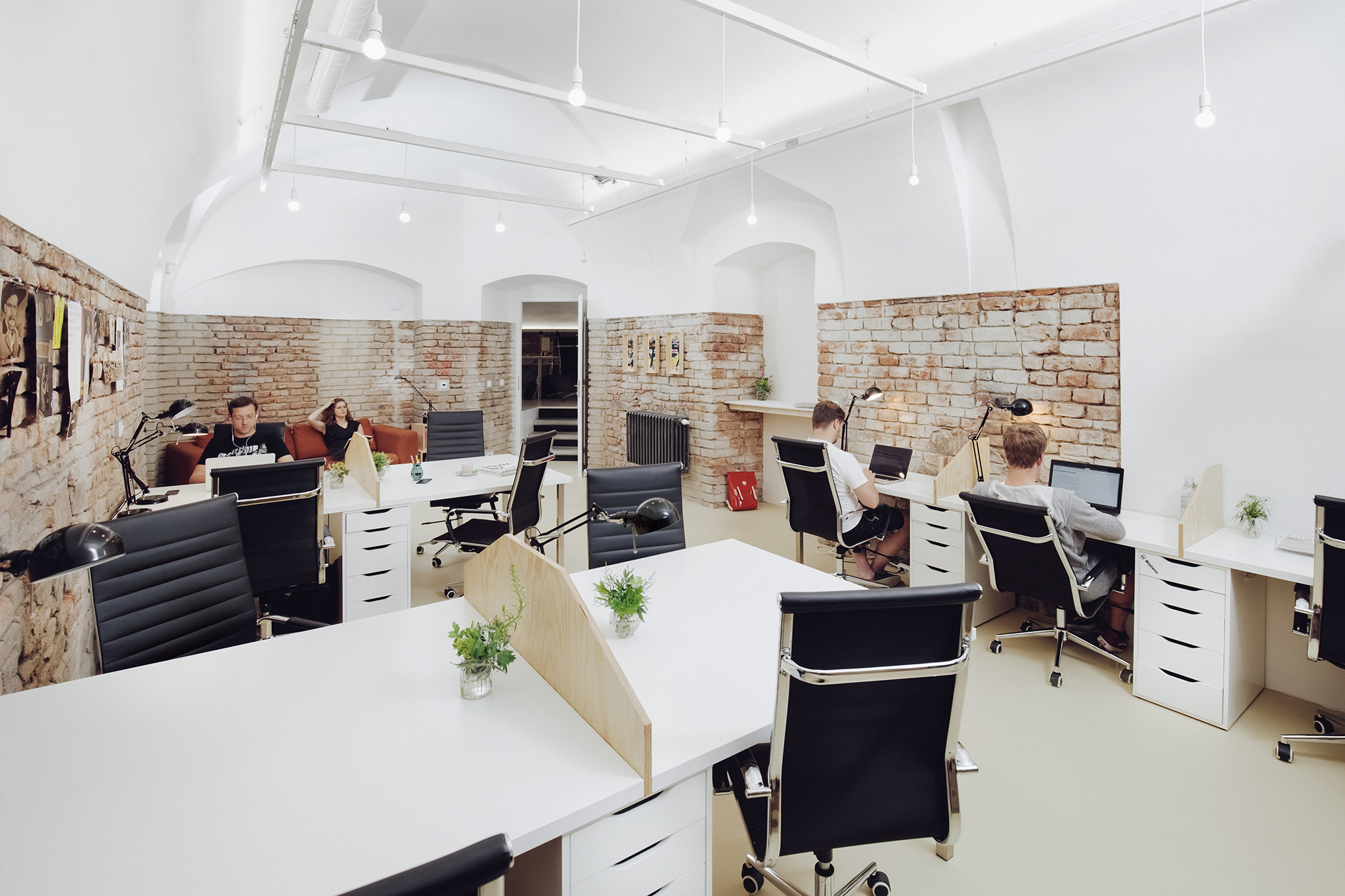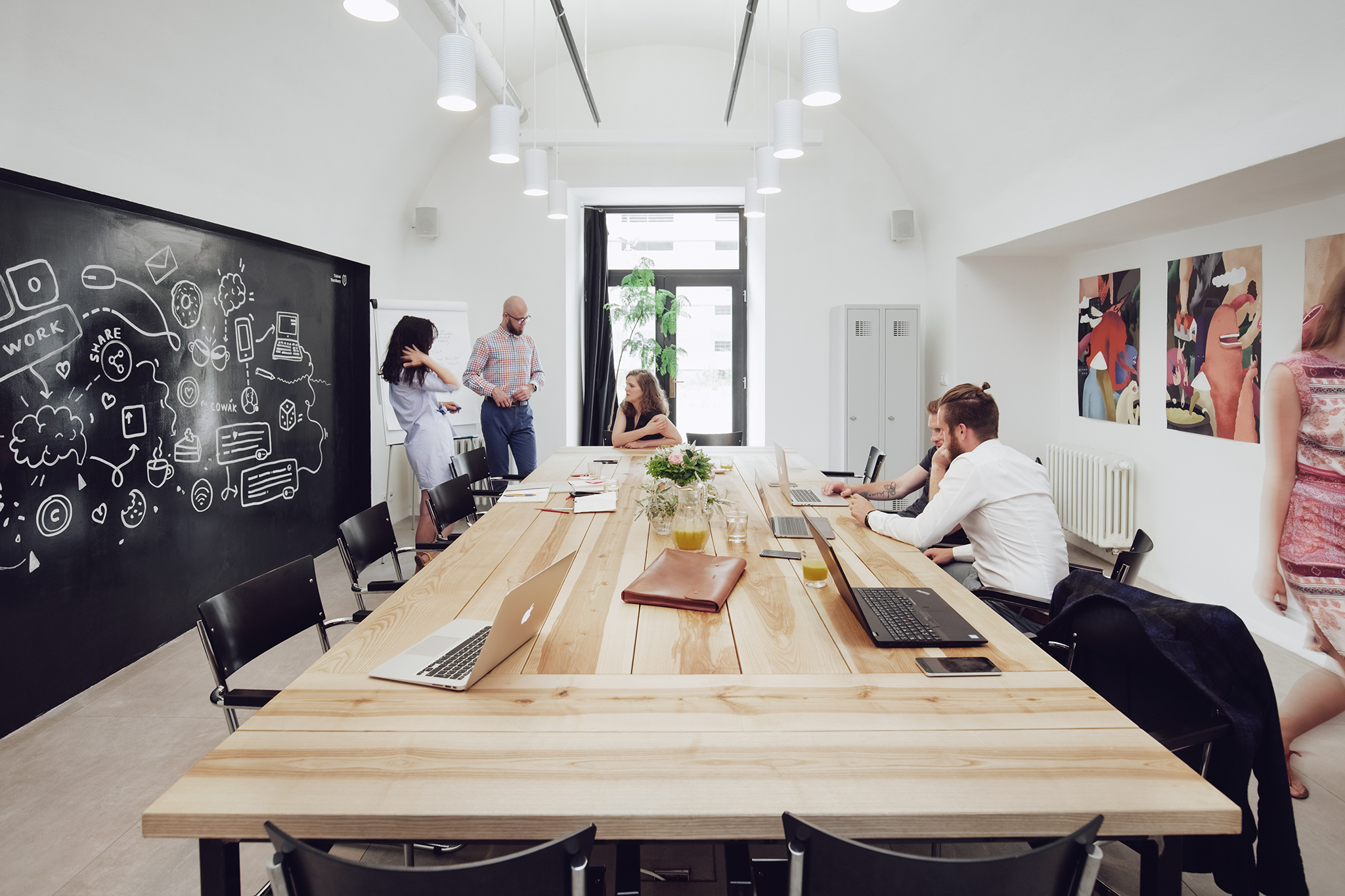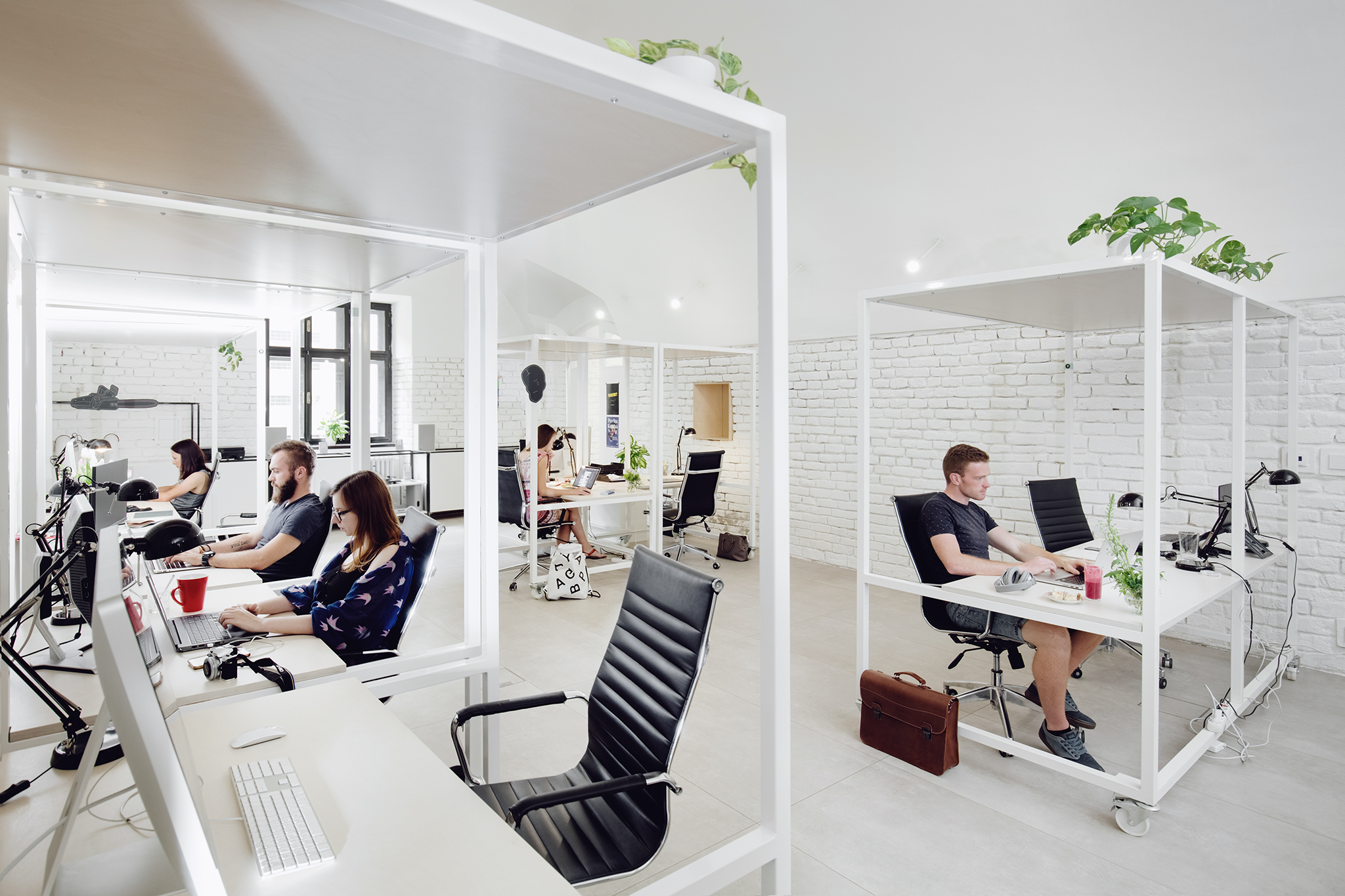How to tackle co-working in a corporation
We are in Florence (Italy) and the renaissance boom of the society is in full swing. The revolutionary ways of material processing, design and new philosophical points of view are coming to life in the so-called "Bottegas", where engineers, mathematicians, architects and anatomists get together with painters, sculptors and other artists. These "Bottegas" gave rise to polymaths such as Leonardo da Vinci and Sandro Botticelli, and with a little exaggeration, we may treat them as the ancestors of today's co-workings. Berlin hackerspace communities, created in the 1990s, are among their younger followers, that have inspired co-workings to be places where freelancers, entrepreneurs and remote workers/employees meet in the form we know today.
Text: Jaroslav Plavec/Juice Up
Collaborative cooperation and the clash of seemingly different professionals has brought fruition in the form of result discovery across history. Corporations that have noticed this phenomenon due to the growing success of coworking centers also want to utilize their potential. Firms are currently using the coworking phenomenon in many ways. Each one has its own justifications and specific objectives it is meant to achieve.

1. Open houses
Open houses are multipurpose spaces, hybrids between public coworking spaces, cafés, concept stores and, for example, fab labs. Nonetheless, these premises belong to a corporate owner and have their own corporate goals, even though they seem to function on an independent basis. A similar multipurpose space focused primarily on design going under the name A/D/O has been opened by MINI - the automobile producing company - in Brooklyn. The company name refers to the team that designed its legendary car. The space also contains an outdoor gallery, where exhibitions and startup accelerators regularly take place. These premises have several corporate goals, but the main ones include the creation of a "hip" brand and the attraction of local designers, from which employees can draw fresh inspiration, or lure them into the internal team. The SAP’s HanaHaus in Palo Alto is based on a similar concept, and Mark Zuckerberg is one of their frequent visitors.
2. Campsites
As the name implies, campsites are another type of coworking space, that opens only temporarily with an ad hoc purpose, in the same way as campsites do. Such premises are not intended for public usage, but for bringing together employees of one company with those of another, that are chosen to work towards a common goal. One example is the assembling of company employees with a vendor team to develop a common product. Another illustration may be the cooperation of employees of a firm with those of the customer to test prototypes. As a result, new products may be delivered to the market considerably faster than before. In practice, this is how the campsite AppHaus in Sillicon Valley (which is again run by SAP) functions - employees, customers and local startups are associated with the purpose of testing a customer’s software.

3. Membership in coworking centers
Probably, the most widespread type of coworking is the membership of corporate employees in standard coworking centers. WeWork, the world's largest coworking network, indicates that at least 25% of their capacity is occupied by corporate clients including those from Microsoft, Facebook, Airbnb, Starbucks, and IBM. For what reason do corporate employees actually get together with independent professionals and why do companies send them there? Firstly, they want to attract new employees and meet their increasing demands for flexibility and diversity of working days. Employees would rather work anytime and anywhere – in a coffeehouse, on a terrace, or sitting on a bench in a park – than sitting on the same chair at the same table for 8 hours straight. Secondly, pragmatism plays a role. From this point of view, coworking has many benefits. For remote teams scattered throughout the world it is important to temporarily place them in one spot. This kick-starts their teamwork and speeds up lagging projects. Innovation teams are also frequent visitors of coworking centers, it is a place where they look for inspiration and fresh ideas. They can undertake the ideation and development phases of projects in a free environment outside the tying corporate structure and embracing corporate politics.

Although I have categorized the forms of coworking, their mutual borders are fading and their principles are intertwining. Some companies already apply coworking elements directly at their headquarters. However, the working environment consists of many overlapping layers. Design, technological equipment, human relations and organizational structure meet in one place. Defining the ideal mix can partly be alchemy, but it is mainly analytical work, that includes sophisticated and robust change management.
There is no universal template defining how to implement such elements in the corporate structure. The reasoning must always depend on the overall corporate vision and clear pre-defined strategic goals we want to achieve. Putting a coworking place in a hipster neighborhood with plenty vanilla lattes at hand is only a partial perspective.